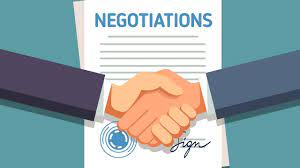Create the Perfect Sales Pitch using the 5 P’s
I’ve coached thousands of sellers on how to create the perfect sales pitch using a framework called the 5 P’s. Until today, I have never shared this with anybody except my coaching clients.
Here’s why it’s so effective: when most companies create a first call deck or sales pitch, they make it all about their own company and how great they are. They include a few slides with an overview of their value proposition, a slide with all the amazing logos they have, and a few customer stories.
This NEVER works!
The reason why is simple: customers don’t care about your products and services.
They care about themselves, achieving their goals, and solving their own problems.
Yet most pitch decks fail to speak to the problems which customers face, and the pains they are causing. Nor do they address how their companies can solve those problems.
That’s why I created a framework which focuses solely on the customer’s challenges, why they exist, the pains they are causing, how your solution can solve them, and the payoff of doing so.
I call this the 5 P’s of Pitching. Here’s what each P stands for:
1. Problem: this is straightforward. What problem do most prospects you work with face that your company can solve?
The problem should be very high level, and important to Senior Executives at the company. It should be a business problem, not a technical problem.
For example, if I sell CRM, the problem I solve would be rep underperformance, low productivity, or missed forecasts. All of which are important to a CRO or CEO.
There’s never just one problem, which is why I created a free template which you can access to fill in several problems you can solve.
2. Primary Reason: Why does the problem exist? What is the root cause of the problem?
By understanding the source of the problem, you demonstrate credibility and establish immediate trust with prospects because you are speaking their language.
In the above example, I could say that reps are missing their forecasts because they are manually forecasting using their gut instinct, rather than using an intelligent CRM system which can leverage AI to accurately predict which deals are most likely to close based on factors like customer engagement, decision maker access, or other key data points.
Another primary reason could be low leadership visibility to active deals, which a CRM solves for. There are always multiple primary reasons.
3. Pain: What pain is the problem causing?
The pain is always focused on the metrics that are impacted by the problem. For example, missed forecasts could mean a reduction in stock prices, missed revenue targets, and sales layoffs.
4. Promise: How does your company solve the problem?
The promise should always solve for the primary reasons you just outlined. So for example, AI driven forecasting would solve for inaccurate manual forecasting or low visibility to deals.
5. Payoff: What metrics do you positively impact by solving the problem?
In the example I mention, the metrics for a CRM would be improved rep quota attainment, productivity, and accurate forecasting, all of which drive top line revenue and profitability.
In this week’s training video, I walk you through how to create the perfect sales pitch using the 5 P framework. If you want to access a copy of the Problem Mapping Template so you can fill out the 5 P’s for your own products and services,access it here completely free!
Share:
Weekly Sales Tips

Be the first to know:
Featured Post:
What’s the #1 key to negotiating which very few people talk about? Knowing your worth and believing it!…
